


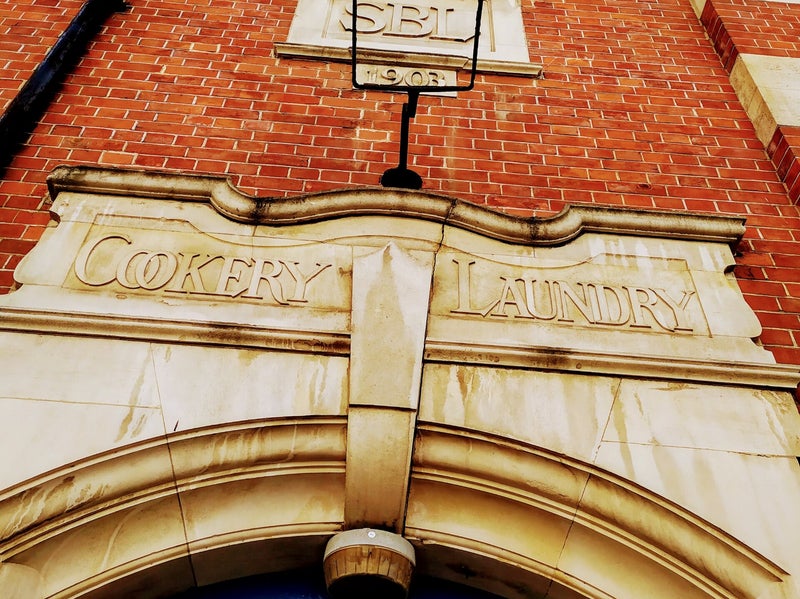
SPITALFIELDS, WHITECHAPEL, MILE END, STEPNEY


SPITALFIELDS
On the map, GUNTHORPE STREET, the alley, off WHITECHAPEL HIGH STREET, where MARTHA TABRAM was found. She is considered the first victim of the RIPPER

Green, to BROADWAY MARKET. Blue, to BETHNAL GREEN. Purple to MILE END & STEPNEY



You arrive at the beginning of OSBORNE ST., on the buses 25 or 205, from the WEST END or the CITY.
From the TOWER bus 15 takes you to the same area, but it is a different stop (on COMMERCIAL ROAD).
From the TOWER OF LONDON to the WHITECHAPEL ART GALLERY

The wall of ROMAN LONDON


GARDINERS CORNER. COMMERCIAL RD branches right. GARDINERS was a big furniture store at the corner


DIETRICH BONHOFFER. Photo from LONDON REMEMBERS
Imagine, though, that you come walking from the TOWER OF LONDON, you pass TRINITY HOUSE (the institution in charge of signalling the coasts of England and Wales by means of lighthouses and buoys), and go up JEWRY STREET, where the remains of the Roman and Anglo-Saxon WALL are now open to the public.
“JEWRY” ST. refers to the site of the first Jewish settlement in England in the modern era. It happened at the time of the CROMWELL PROTECTORATE. SEPHARDIC Jewish families, who had been expelled from Iberia, and had wandered for decades through Europe and North Africa took up residence in this area of the City.
The BEVIS MARKS SYNAGOGUE or “Spanish & Portuguese Synagogue” in the eastern part of the City, will be very close to your path, especially when you cross into the beautifully landscape ALDGATE SQUARE (an space where the car was king).
HOUNDSDITCH, another street of the CITY, is around corner. Most of the shops were Jewish. One of them was THE SHELL SHOP.
Before crossing, however, at the corner of JEWRY ST, you will see the blue plaque marking the place where the “OLD GATE“ was located.
You find yourself outside the walls of the ancient city. You will arrive in front of ST.BOTOLPH WITHOUT ALDGATE, the Church being located outside the city walls. When travellers were leaving London, towards the COUNTY OF ESSEX, alongside this road (originally, a ROMAN road leading to COLCHESTER (CAMULODUNUM) they entrusted themselves to ST.BOTOLPH, patron saint, back then, of wayfarers. No wonder you will find, in London, two more churches under the advocacy of this saint, at the feet of the site of old gates (BISHOPSGATE and ALDERSGATE).
You are leaving behind, to the left, HOUNDSDITCH, a street which follows the course of the moat outside the city wall (Dead dogs might be found at the bottom of the mound).
Continue Eastwards, passing the ALDGATE L.U. station and the WHITECHAPEL building.
Do you realise that you are leaving the CITY OF LONDON?. You are passing one of the DRAGONS that indicate the limits of its jurisdiction. In older times, the ALDGATE BARS used to be here. And on the opposite side, one of London’s oldest pubs in existence, THE HOOP AND GRAPES.
And on the other side of the ST. BOTOLPH ST., that you are crossing, when the new student residence that you see was being built, they discovered the foundations of the BOAR’S HEAD PLAYHOUSE. Perhaps SHAKESPEARE performed in this theatre, or, his plays were staged here….
In GOULSTON ST. used to be the ST.PETER’S GERMAN EVANGELICAL CHURCH. DIETRICH BONHOEFFER was a pastor here in the 1930s. He is one of the CHRISTIAN MARTYRS of the 20th.c. represented in the WESTMINSTER ABBEY west door MEMORIAL.
In OLD CASTLE ST., note the façade of the former WASHOUSES. But, before that, the former EIC tea warehouse is now CALCUTTA HOUSE.
Once you cross COMMERCIAL STREET, if you have time, turn left take a look at TOYNBEE HALL, the old SETTLEMENT of students and graduates of the universities of OXFORD and CAMBRIDGE, where they helped the needy people of the district, contributing to their education and wellbeing. It was an initiative of CANON SAMUEL BARNETT, rector of the parish (ST.JUDE’S, destroyed during WW2) and social activist, and his wife, HENRIETTA. The institution continues to perform social functions, especially advisory services. Curiously, two leading British politicians who fell in disgrace in the recent past, have provided their voluntary services in this institution: in the 60s, the former Foreign Secretary, JOHN PROFUMO, in the 90s, a very promising cabinet minister, who is now a vicar of a WESTMINSTER parish, JONATHAN AITKEN.
Finally, along the WHITECHAPEL HIGH ST., until you reach the WHITECHAPEL ART GALLERY.
SAMUEL and HENRIETTA BARNET. MRS. BARNETT was a social activist on her own right, who founded the HAMPSTEAD GARDEN SUBURB, a garden city-style development intended for all social classes

The WEATHERVANE of the former PUBLIC LIBRARY
Note, though, FREEDOM ALLEY, where you can enter the FREEDOM PRESS, which has a long tradition as a revolutionary Anarchist printing press and bookstore. In the EAST END, being a working class area, leftist ideologies are deeply rooted.
And the former ALBERT'S clothing store, from where some JACK THE RIPPER TOURS depart. Look at the emblem, including the STAR OF DAVID; in the storey above the shop were the headquarters of a Jewish newspaper. BURGER KING occupies de site of BLOOM’s, a Jewish restaurant which was infamous for rudeness of its waiters.
The WHITE HART PH, has a place in JR’s story. Probably it looks the same way it looked in 1888…
WHITE HART is a common name in English pubs. A white hart was represented in the badge of KING RICHARD II, precisely the one who made compulsory the names and signs of inns in order to identify them.
Next door, the entrance to the GUNTHORPE STREET, an alley in fact, the place where the first victim of 1888 attributed to JACK THE RIPPER, MARTHA TABRAM, was found.
And you are almost in front of the WHITECHAPEL ART GALLERY, the great cultural institution of the East End, and a very prestigious one, which in 1936 exhibited PICASSO's GUERNICA. The gallery is housed in a building designed in a style similar to ART NOUVEAU, that in England is called ARTS & CRAFTS.
And it also occupies the building of the former public library, the “University of the Ghetto” (that is what it was called when a few generations generations of young Jews learned some rudiments of education here, after long hours of work in the SWEETSHOPS (clothing workshops); you can see de EH plaque dedicated to the poet -A BALLAD OF WHITECHAPEL- and painter ISAAC ROSENBERG).
In honour of the truth, it has to be said the EAST END has never been a racial ghetto.
The gallery also has its origins in the BARNETTS initiative (1901]. While the library (like so many others in London and England) was funded by PASSMORE EDWARDS, a CORNISH press magnate. The weathervane of the former library is very curious work by the artist from Vancouver RODNEY GRAHAM (ERASMUS riding backwards while reading a book!).
The GALLERY has a façade (fallen foliage) ARTS AND CRAFT (English Art Nouveau), by CHARLES HARRISON TOWNSEND (who designed as well the BISHOPSGATE INSTITUTE, opposite LIVERPOOL STREET STATION). On the frieze of the façade, the TREE OF LIFE, by artist RACHEL WHITEREAD.
Follow that alley to the end (entering thus SPITALFIELDS) and you will see the old arch that used to give access to the housing estate built for the JEWISH popular classes by THE 4% INDUSTRIAL DWELLINGS COMPANY, an initiative of the wealthy Jewish community (among them, the ROTHSCHILD), which demolished one of the worst SLUMS, and redeveloped this area at the end of the 19th century. A 4% is the percentage of profit that investors in social houses obtained.
In that very Victorian development was born ABE SAPERSTEIN, future founder of the HARLEM GLOBE TROTTERS and also initiator of the AMERICAN BASKETBALL LEAGUE of the USA, and who introduced the three-point rule. Even though he was very short man!
You might go through the new housing estate erected in the 1980s, an initiative of TOYNBEE HOUSING ASSOCIATION, and where families from Bangladesh live.
The Jewish community established in the East End from the middle of the 19th. c. They were very different from the SEPHARDIC JEWS who had established themselves in the East part of the City. They we’re AZKHENAZIS from RUSSIA and countries under the control of the RUSSIAN EMPIRE, like POLAND, UKRAINE, BIELORUSSIA… and they fleeing PROGROMS, that is, persecution and killing, which had intensified with the assassination of the RUSSIAN CZAR.
BRICK LANE


STAR OF DAVID. The JEWISH HERITAGE of the area is still visible


Site of a HUGUENOT SOUP KITCHEN

Tiles and bricks were produced in the area in the 17th c.
FASHION STREET. ARNOLD WESKER was born here
Continue East and you will reach BRICK LANE in 1m.
To the right, thought , is OSBORNE ST. At number 9~13 were the SARM EAST recording studios where QUEEN recorded “BOHEMIAN SYMPHONY” in 1975. THE CLASH also recorded “COMPLETE CONTROL” here.
In the pub on the corner, which was called THE ARCHERS (now it is a pub and boutique hotel, belonging to a small company that owns other prestigious establishments: the BUXTON), the Anarchists tried and acquitted RUDOLF ROCKER (a Gentile German who was a leader of Jewish Anarchism in the area, and spoke YIDDISH) of being a German spy, in 1907. In the old times, EAST END pubs were common places for political meetings, of the leftist and revolutionary side, and Jewish, of course. Instead German, French and Italians exiles and refugees used to meet in the WEST END pubs. For instance, the RED LION PH, in GREAT WINDMILL STREET, SOHO, where the London branch COMMUNIST LEAGUE had headquarters (MARX and ENGELS wrote fir them the COMMUNIST MANIFESTO).
The first prostitute in the series of attacks and deaths in 1888 was attacked on this street, 6 of which were attributed to the famous RIPPER. Her name was EMMA SMITH.
BRICK LANE is "the street" by definition of the East End. The high street of BANGLATOWN. Enjoy it, and also the adjacent streets. The houses are mostly Victorian, and only a few of them Georgian. Plus a couple of more modern ones. Shops offer Saris and other pieces of Asian clothing, and food products from the Indian Sub-continent...). And the famous curry-houses... so famous that there are 3 branches of “BRICK LANE CURRY HOUSE” in NEW YORK CITY!.
And now also other types of restaurants and cafés. Individual shopfronts, no franchises, like an old high street.
At FASHION ST. admire the former market, in a MOORISH or BYZANTINE style. It was not a successful initiative, although it also included a library and bathrooms. The working classes preferred to shop (and traders, to sell) in the street stalls!. Now it is mainly occupied by university institutions.
On HENEAGE STREET look for the PRIDE OF SPITALFIELDS pub, it is the only one left in the neighbourhood... which used to be teetotal. Next door, the GILBERT & GEORGE CENTRE, in case you are an arty person. If you are a beery person, stick to the previous one.
On BRICK LANE, the SEVEN STARS pub has been closed for years, like a few other others along the street. Look up and you will see some curious names of old pubs The FRYING PAN, for example, that you passed while exiting the small social housing estate, is now a curry house. Or THE JOLLY BUTCHERS.
Now that you are passing the old PARISH SCHOOL, logically linked to the ANGLICAN Church, but look at this small detail: the STAR OF DAVID engraved on the DRAIN, to the right of the building. A Christian school, where most of the students were Jews, 100 years ago. And now they are Muslims!. London Paradoxes.
You arrive at FOURNIER ST. Look at the corner: a tall, steel, cylindrical minaret, If you continue inspecting you see the date of construction: 1743 along with the inscription UMBRA SUMUS. The ÉGLISE NEUVE, French Huguenot Church, from 1743, which had become a SYNAGOGUE , in the 19th century, is since the 1970s a MOSQUE... I have already told you, territory of emigrants... rather fugitives (French Protestants, Eastern-European Jews, Bangladeshis, all of them fleeing persecution or war).
Have you seen, in BRICK LANE, an old JEWISH shop sign (CH N.KATZ)?. Mr.KATZ was a string merchant. In FOURNIER ST., note SCHWARTZ, the former dairy.
BRICK LANE became a market street in the 17th. C. Livestock, fruits and vegetables, household goods… and during the Jewish “domination” of the area it was allowed to operate on Sundays. That is why you are here on a Sunday. But now is about antiques, crafts, fashion, touristic souvenirs, and exotic food.

FOURNIER & PRINCELET STREETS

Enjoy the entire street, its Georgian houses, with their light wells, the coal cellar covers, the sculpted wooden porticos, the attics with large windows (since the Huguenot silk weavers had their looms up there), as well as WILKES ST. and PRINCELET ST. Not all the Huguenots were weavers, though. They made a huge contribution to this country (and other countries, like GERMANY) in many fields, as the military or engineering, for example.
One of the workshops here made QUEEN VICTORIA’s CORONATION silk gowns.
In PRICELET ST., blue plaques acknowledge the attainments of two EAST END women: a designer of silk patterns now exhibited in the V&A MUSEUM (ANNA MARIA GARTHWAITE) and a first woman mayor (MIRIAM MOSES)
On PRINCELET ST. Look for number 19, and you find the MUSEUM OF EMIGRATION AND MULTICULTURALITY, although you will not find always open.
This house contains a couple of surprising things: when the SPITALFIELDS HOUSING TRUST bought it, it was discovered, in the garden, a small Synagogue. And, as well, a locked room: and when it was opened they found it exactly as the last occupant, Mr. RODINSKY, left it before he mysteriously disappeared 20 years earlier (we know that he died in an asylum in Surrey in 1969).
At number 8 there had been a HEBREW DRAMATIC CLUB, that closed after an avalanche in which several people died. The company, that use to perform in YIDDISH, was headed by JACOB ADLER, and, greatly affected by the misfortune, left London and continued to achieve success in the US.
At he west end of FOURNIER STREET, after the RECTOR’S HOUSE you will not miss CHRIST CHURCH, SPITALFIELDS, the parish church, an originality of the great architect NICHOLAS HAWKSMOOR. This church was built by a legal order, which mandated the erection of up to 50 Anglican churches, to counteract the push of other PROTESTANT but rival faiths (in this area, the CALVINISM of the Huguenots). Note the faded old signs on the church walls: COMMIT NO NUISANCE!. And the stone plaques reminding of the risks of fire, and the means to remedy them.
And, finally, the TEN BELLS pub. Look inside at the tile murals, on the walls: the Victorian one, at the far end, in the background; The contemporary one, on the FOURNIER ST. side, show at both edges, the images of GILBERT AND GEORGE, two artists who have lived and worked on the street in recent decades.
In the last decades of the 20th century, the pub was called JACK THE RIPPER, since it was one of the places that sometimes served as a pick-up place for prostitutes and their clients. In the 19th century this area had become a RED LIGHT DISTRICT and even at the end of the 20th century it was easy to find some prostitutes on these streets.
For some of those years, the pub had become a strip club; there are still a couple of these locals in the district, occupying the premises of former pubs.
Now that you are here, you cross (again) COMMERCIAL STREET, a street opened in Victorian times, and you can enter the former SPITALFIELDS MARKET (this was a wholesale fruit and vegetable market, until the 1990s., belonging to the CITY OF LONDON, where you are now technically located). Restaurants, fashion and accessories shops, stalls selling crafts, designed clothes, street food… you are going to enjoy it. Just outside the OLYMPIC PARK>>>> you will see the NEW SPITALFIELDS MARKET.


Along COMMERCIAL ST.
FRENCH HERITAGE: THE HUGUENOTS
The FRENCH HUGUENOT SILK WEAVERS (or other trades) came to England (and to other countries, in Europe and America) left their country due to religious persecution. Especially after the EDICT OF NANTES () was revoked in 1685. All had started, though, in France with the 1572 MASSACRE OF ST.BARTHOLOMEW (PHILIP MARLOW, SHAKESPEARE’s contemporary wrote a play about the subject). They were CALVINISTS and freedom of worship was removed by the French crown.
Here, in SPITALFIELDS, the French weavers were outside the jurisdiction of the WEAVERS’ GUILD of London.
As some of them were prosperous merchants they were involved in banking and insurance. Some founders of the BANK OF ENGLAND.
Silk weaving was established in SPITALFIELDS. DANIEL MAROT worked for the royal court at HAMPTON COURT PALACE, as or Ema site. As did the furniture craftmen PELLTIERS (who worked as well in KENSINGTON PALACE). Or goldsmiths CRESPIN and DE LAMERIE.



To the left of the photo, the OLD SPITALFIELDS MARKET. To the right, a labyrinth of interesting streets with names related to the ARTILLERY practices
CHRISTCHURCH, SPITALFIELDS.. The church designed by NICHOLAS HAWKSMOOR, disciple of CHRISTOPHER WREN, closing triumphantly the vista from BRUSHFIELD STREET.
Massive portico, taking the form of a vast VENETIAN WINDOW, giving to an eccentric tower, surmounted by a tapering spire.

OLD SPITALFIELDS MARKET and around.
Artillery?. Gun?. Marks of the HONOURABLE ARTILLERY COMPANY
To the left, parish boundary. To the right, a mark (BROAD ARROW) of the ARTILLERY GROUNDS


SANDYS ROW SYNAGOGUE. The first ASKHENAZI synagogue established, and the only one still functioning. It used to be a HUGUENOT CHAPEL

ARTILLERY LANE. Former SYNAGOGUE, now offices


CITY ROAD. HONORABLE ARTILLERY COMPANY. Just oposite,JOHN WESLEY’S METHODIST CHAPEL, mother church of the World’s Methodism. And if you visit the area, do not miss BUNHILL FIELDS BURIAL GROUND
Also take a walk, if you can, through the labyrinth of streets south of the market, some with "warlike" names, such as GUN STREET or ARTILLERY LANE. The fields were used for shooting practice by the HONORABLE ARTILLERY COMPANY, in the time of HENRY VIII. In the neighbourhood you will find on a couple of exterior walls of buildings the characteristic mark that reveal the military character of the area, historically.
And, further on, DEVONSHIRE SQ. and CUTLER STREET and NEW STREET, where the former EAST INDIA COMPANY warehouses are, are worth a visit. Maybe you are going to visit BLACKWALL>>>>, where the cargos of the EAST INDIAMEN where unloaded, and taken here along the EAST INDIA DOCK and the COMMERCIAL ROADS.
I do not need to tell you: you have already seen by yourself the shops in the area. Did I told you that this was a poor area?. Well, it has changed a lot, hasn't it?. Parts of EAST END have been gentrified and professionals of the arts, fashion, creation in general, finances… live and work around, and now many visitors like you as well as City workers pop in the area regularly
If you continue a little further south, you will find the PETTICOAT LANE MARKET, one of the SUNDAY EAST END MARKETS. Only Sundays!.
I mention it but I don't especially highlight this market, which is held on MIDDLESEX STREET, and adjacent streets, because it is more of a clothing market and a bit of tourist paraphernalia, but why not take a look? The rest of the week, bar SATURDAY, the market -reduced- is held in WENTWORTH ST. and streets around.
By the way, the names of London streets can create confusion, in every sense... So, where do we stand: is it called PETTICOAT LANE or MIDDLESEX STREET?. Is it a “street” or a “lane”?. Well, it is officially MIDDLESEX STREET. But it used to be PETTICOAT LANE!.
PETTICOAT

Already in the 17th. C. this was already PETTICOAT LANE. Cloth traders had moved here from LONDON BRIDGE and start the long association of the area with clothing. But a name associated with feminine underclothes could no be right for the VICTORIANS, and they changed the name!

MIDDLESEX. A forgotten county
ST.MARY’S PRIORY and DENNIS SEVERS HOUSE
In the map, DENNIS SEVERS HOUSE
To the North of SPITALFIELDS, SHOREDITCH, HOXTON…HIPSTERS’ LONDON

ELDER ST. Beside MARK GERTLER’s house. The coal hole is not a real one. It is a fragment of the MERRY-GO-ROUND. This is work of KEITH BOWLER inspired in the real coal holes or manholes


The MERRY-GI-ROUND. The most famous painting of MARK GERTLER
You will return to the OLD MARKET. If you continue going around the premises (in fact, now only part of the original building remains standing, the part to the West, where you are now, has been demolished and offices have been built) you will find the remains of the crypt and charnel of the Church of the old ST. MARY’S PRIORY, founded in the 12th century (at that time also called “SPITAL” or a place that welcomed helpless people), which ended up giving the neighbourhood its name: SPITALFIELDS. Those fields used for the practice of longbows and crossbows!.
And to the North West of the Spitalfields Market, in SPITAL SQUARE you will find the old HALL of the CENTRAL FOUNDATION GIRLS SCHOOL, then, beside it, a society that looks after ancient buildings (and which helped to save that previously mentioned sight!), and a little further down and at the bottom of the alley to the left, the plaque dedicated to JOHN WESLEY'S mother. She was buried in BUNHILL FIELDS, and just across de road from that NON-CONFORMIST CEMETERY you will find WESLEY’S CHAPEL, the epicentre of World’s Methodism.
You head north north, and look for FOLGATE ST: the DENNIS SEVERS HOUSE is one of those London eccentricities. An 18th century house, and when you enter it you will realise that it appears as if you were in a lived in house, in the 18th-20th centuries period. The fictional HUGUENOT JERVIS family occupied the building. With no electricity, no gas, and no running water. And the smells of food, in half eaten plates, and the sound of the chiming clocks, and the rumpled and still warm beds… and a full chamber pot!. it is like the building is still alive.
In fact, it is the eccentricity of a Californian, who used to live here, with his partner, until his death in 1999; a man enamoured of England, but who hated the 20th c. A man who had been, early on in his career, an employee in QUEEN ELIZABETH II’s household!.
Continue if you wish along ELDER ST.: there are very well preserved Georgian houses. In England this is a classified “conservation” area.
You can see the plaque commemorating MARK GERTLER, birn in SPITALFIELDS, the son of a Polish Jewish family, and who gained favor amongst the members of the BLOOMSBURY GROUP (VIRGINIA WOOLF and company; he was in madly in love with DORA CARRINGTON. But he committed suicide after the victory of FRANCO in the SPANISH WAR).
TIMOTHY EVEREST, bespoke casual taylor (of BECKHAM, JAGGER and CRUISE) had an atelier here.
You are now close to the main street, NORTON FOLGATE (in the old times it was a hamlet here, which constituted a LIBERTY, a separate jurisdiction, due to the existence of an old monastery).
The old Roman road used to split the hamlet, while , heading towards the Northeast of England (LINCOLN and YORK), and it was called in the Middle Ages ERMINE STREET, It begins after after BISHOPSGATE, and it has been renamed SHOREDITCH HIGH STREET, KINGSLAND RD. or KINGSLAND HIGH ST. and more names depending on the district it passes through.
In fact this area, the North of SPITALFIELDS, is part of the CITY OF LONDON.




Public transport at hand. LIVERPOOL ST.STA
Towards London’s first THEATRELAND
Now you could divert, continuing North towards ST.LEONARD'S Church, SHOREDITCH.
Definitely, you will see that you are entering an area with SHAKESPEAREAN links, a neighbourhood I will deal with in a future web. So, consider this only a little appetiser.
If you cross over the main road, walk WORSHIP ST. beside the PRINCIPAL TOWER, mostly a residential development, then walk Northwards along CURTAIN ROAD, until you get to THE STAGE, another contemporary development where, by chance, during the first excavations for the foundations, THE CURTAIN playhouse was discovered. Now the archeological rests are in view of the public.
Still more to the North, along CURTAIN RD. note the plaque commemorating the first purpose built playhouse, of the ELIZABETHAN ERA. And, for the first time, a playhouse was called, THE THEATRE.
Turn right and have a look at NEW INN YARD, where you will be met by the Statue of WILLIAM SHAKESPEARE. I leave you alone for a while.
Now, ST.LEONARD’S CHURCH is close by. The ACTORS’ CHURCH of the EAST LONDON (in COVENT GARDEN, ST.PAUL’s is, as well, the actors’s church), where the BURBAGES, father and sons, SHAKESPEARE’s partners, are buried (in the crypt). SPENCER, the actor, killed by JONSON, the writer, rests as well here.
RIVINGTON ST., CHARLOTTE ST., and HOXTON SQUARE are around. Explore. And, if you feel strong, still further North, HOXTON MARKET and the former GEFFRYE ALMSHOUSESS, now the MUSEUM OF THE HOME.
Now, have you seen by chance a VIETNAMESE restaurant?. Especially if you go back to the main road you will find many of them.You are in London’s LITTLE HANOI. Maybe it is time for lunch or dinner, why not try it?.
Of course, as you have seen, there is a multitude of restaurants and pubs in the area. The choice is difficult. Remember, BANGLATOWN is around the corner!. And TURKISH DALSTON IS on-line a fa s tops away on bus 149.
On the other hand, of course, you already knew that you were visiting the new SOHO of 21st century London!.
NEW INN ROAD. Artwork of FRENCH GRAFITTEUR THIERRY NOIR



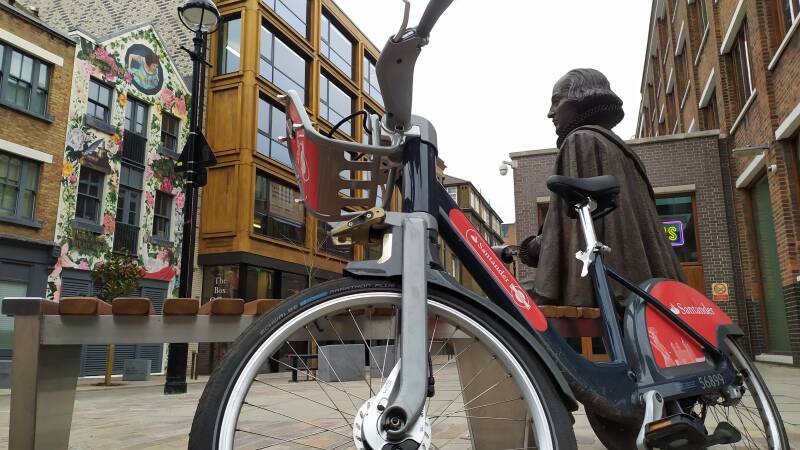
Street art?. Where?



Back to BRICK LANE: OLD TRUMAN’S BREWERY

If you go back to BRICK LANE, along FOLGATE ST., the Victorian social housing building on the corner of COMMERCIAL ST. was the first block built by the PEABODY TRUST, of which you will see housing estates throughout London. They are due to the initiative of the great philanthropist, born in DANVERS, MASSACHUSSETS, GEORGES PEABODY.
PEABODY spent a good part of his business life in London and dedicated the largest part of his fortune to serving the housing needs of its citizens. His MEMORIAL can be found in ROYAL EXCHANGE BUILDINGS and in WESTMINSTER ABBEY, where he was temporarily buried. He now rests in PEABODY.
If you continue along COMMERCIAL ST., the building on the corner of FLEUR DE LIS ST. is the former POLICE station, from where the investigation into the suspicious deaths of 1888 was carried out.
You cross COMMERCIAL and continue along HANBURY STREET, where POPPYS awaits you if you fancy a FISH&CHIPS, or ROSA'S CAFÉ, if you want to eat THAI.
On the street you will find an entrance to the old TRUMAN brewery. In the corner of the entrance you might see guide talking to a group about JACK THE RIPPER. Here (in a house that no longer exists) ANNIE CHAPMAN was murdered.
You might enter now the former TRUMAN BREWERY, and you will exit it into BRICK LANE. You will find shops and eateries, of course.
Or, if you follow HANBURY ST., note the HANBURY HALL (now is not open to the public, as is rented as work space; I leave you to read the plaque) and you will be back in BRICK LANE in 2 min.
A little South, you will find TAJ STORES, a long established grocery store selling products from the Indian subcontinent.
SUNDAY EAST END MARKETS

Bagels!


BETHNAL GREEN RD.: KOREAN POP-FANS SHOPS. Plus a few Asian restaurants
And if today, dear reader, is SUNDAY, you are findIng many more people and you will notice that along BRICK LANE, on both sides, in the buildings within the grounds of the former TRUMAN, HANBURY & BUXTON BREWERY (the BLACK EAGLE), the largest brewery in the world at its time, you will find several MARKETS, in places that are not open to the public the rest of the week.
All of this is part of the SUNDAY EAST END MARKETS. Enjoy the food, the vintage products, the antiques, the crafts, the live music in the street...
During the week, the area is not much less lively, especially creative professionals work here, inside and around the former brewery, and fairs and events are held... and Saturday is, definitely, a good day, as well.
On the brewery's former DIRECTORS office building, the blue plaque honours the company's partner,
THOMAS FOWELL BUXTON, the standard bearer of the anti-slavery campaign in Parliament, after succeeding WILLIAM WILBERFORCE. Note that he also had residence here, as stated by the plaque. He was very influenced by the QUAKERISM of some members of his family, people fairly compromised with fairness and justice. On the other side of the little court the BREWER’S HOUSE.
Immediately afterward, to the right. you pass the stables and workshops of the factory. Note the date inscribed in the stone (REGENCY period) The workshops provided all the necessary material the PUBS owned by the company. Everything was done in house. BREWING was big business in EAST LONDON!.
By the way, TRUMAN BEER was revived a few years ago, but then changed its name and now is BIG PENNY. You are going to find the brewery, and the tap and eatery, BIG PENNY SOCIAL, in WALTHSMSTOW, East of the LEA VALLEY.
93 FEET EAST is your place if you are looking for a nightclub…
You are getting towards the end of BRICK LANE: don't miss the two bagel bakeries: BAGEL SHOP and BAGEL BAKE, selling their bagels and other types of typical Jewish bread, and that are witnesses of the area's past. The SALT BEEF, with mustard and pickles, is delicious. And the smoked salmon bagel too…
Don't miss either the vintage shops (and other products) on CHESHIRE STREET, and the SCLATER ST. second hand and bric-à-brac’s market. Sundays only!. Note the cartouche with the name of the street: it is dated 1778.
And the coffee and the atmosphere in KAHAILA is really good.
You then arrive at the corner with BETHNAL GREEN ROAD. To the left, RICH MIX, is an arts centre. To the right you will find an interesting art gallery, ESPACIO GALLERY, FLASHBACK RECORDS, vinyl store, the WELL & BUCKET PH, the TAS FIRIN Turkish restaurant, and a few Asian eateries (not Bangladesh curry houses) and a couple of Korean POP fan shops. And do not miss the CAT SHOP.
Towards BETHNAL GREEN along different routes

1. Bus routes 8 and 388 take you there.
2. You can walk to BETHNAL GREEN, alongside the main road. I can assure you that you are going to find some interesting shops and cafés, eateries or drinking places.
And you are following , precisely, the same route of three funeral cortèges (the three deceased KRAYS, at the end of last century). Thousands of people in this street… unbelievable
3. You could continue walking East along CHESHIRE ST. and you turn left when you get to the pub CARPENTERS ARMS (do not get deterred by the KRAYS’ Olink to have a drink here!) you will find ST.MATHEW'S Church. It is the parish of BETHNAL GREEN. And, among other events, the funerals of the KRAY BROTHERS (the three, not only the famous TWINS) took place here.
You then cross the old cemetery towards the East, turn left again and then right, always towards the East: you pass interesting traditional workers houses and a park, WEAVERS FIELDS (the “weavers” refers to the Huguenot weavers). You are already in BETHNAL GREEN. On the edge of the park, towards the end, in OXFORD HOUSE, which was created as a settlement, following the model of TOYNBEE HALL, there is a café and exhibition gallery. BETHNAL GREEN ROAD is only a few yards away>>>>.
The park is in the site of terraces of houses which were decimated during the SECOND WORL WAR.
South of WEAVERS FIELDS you are going to find the GOOD SHEPHERD MISSION and the former GOOD SHEPHERD SCHOOL.
Only a few yards away, my favourite barber JAMAL, just in case you need a great haircut!.
If you walk to the other side (East, towards BRICK LANE), the former PUBLIC BATH are, now, the boxing club who had the KRAY TWINS as members. And the site of the KRAYS dwelling is in VALLANCE ROAD


THREE COLTS LANE.BETHNAL GREEN STATION. South of the FIELDS
From BRICK LANE to COLUMBIA ROAD: SUNDAY FLOWER & PLANTS MARKET
In the map is pointed where the JONES DAIRY is

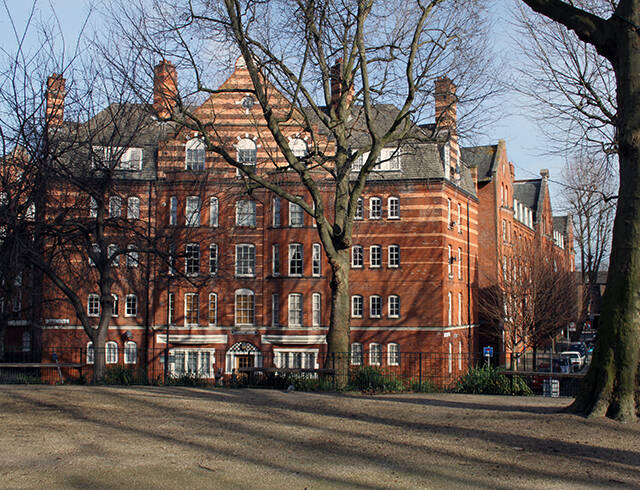
The infamous OLD NICHOL slum, the blackest pit in London, according to ARTHUR MORRISON’s novel THE CHILD OF THE JAGO, converted in the first European council estate
Remember when you were at the end of BRICK LANE.
North of here, a bare 20-minute walk, in COLUMBIA ROAD, you will find the charming and famous flower and plant market. And antique shops, craft shops, cafés , restaurants, maybe music on the street... and a great, family atmosphere. And above all, flowers and plants!. And, before Infirget, do not miss the old DAIRY...
To go to COLOMBIA ROAD you walk the whole of trendy REDCHURCH STREET (shops, art galleries, pubs, arty cafés ...) and then through the BOUNDARY ESTATE, the first development in EUROPE of municipal social houses (1890s) initiative of the just created LONDON COUNTY COUNCIL, the first all London central authority, albeit the metropolis of that time was much less extended than the GREATER LONDON post-1965.
When it was built, replacing what was considered the worst London slum (the lowest class, vicious, semi-criminal area, according to the POVERTY MAPS), decent Jewish families moved to live here. Now, of course, they are Bengalis families the dwellers of most of the flats.
You are on the BOUNDARY between the SHOREDITCH and BETHNAL GREEN local districts at the end of the 19th c.
Have a look at the former ROCHELLE SCHOOL. You are going to be surprised: an artist’s community and a restaurant. And, definitely, many of the 18th c. refugees were from LA ROCHELLE.
To the left of ARNOLD CIRCUS (where the bandstand is)) CALVERT AVENUE has a couple of interesting shops and cafès.
You will get to COLUMBIA ROAD along VIRGINIA ROAD, but consider a longer detour following WELLINGTON ROW and BARNET GROVE.
If, while exploring the market and the rest, you walk towards the WEST end COLUMBIA ROAD, leaving behind the market stretch of the street, on the right —only gates and railings survive — is the site of a covered market, which failed; on the left, the LEOPOLD BUILDINGS, social housing.Both were the initiative of MRS. ANGELA BURDETT COUTTS, the heiress of a huge fortune (the family business was COUTTS BANK, bankers to the royal family and the aristocracy of the realm, and NIGEL FARAGE) and consequently, a great Victorian patron of charities).
You exit onto HACKNEY ROAD and then arrive at SHOREDITCH HIGH STREET. Do you remember <<<<LITTLE HANOI? . It is in sight. And ST.LEONARD’S. And 21rst c. SOHO.
And you had buses 26 and 55 to the WEST END. Or 149 to DALSTON, one of the epicentres of the Turkish community (Turkish restaurants!).
So enjoy the plant and flower market. But be careful: if you come around two in the afternoon the stops are already being dismantled. You get good discounts thought !.
Towards BROADWAY MARKET, LONDON FIELDS and HACKNEY
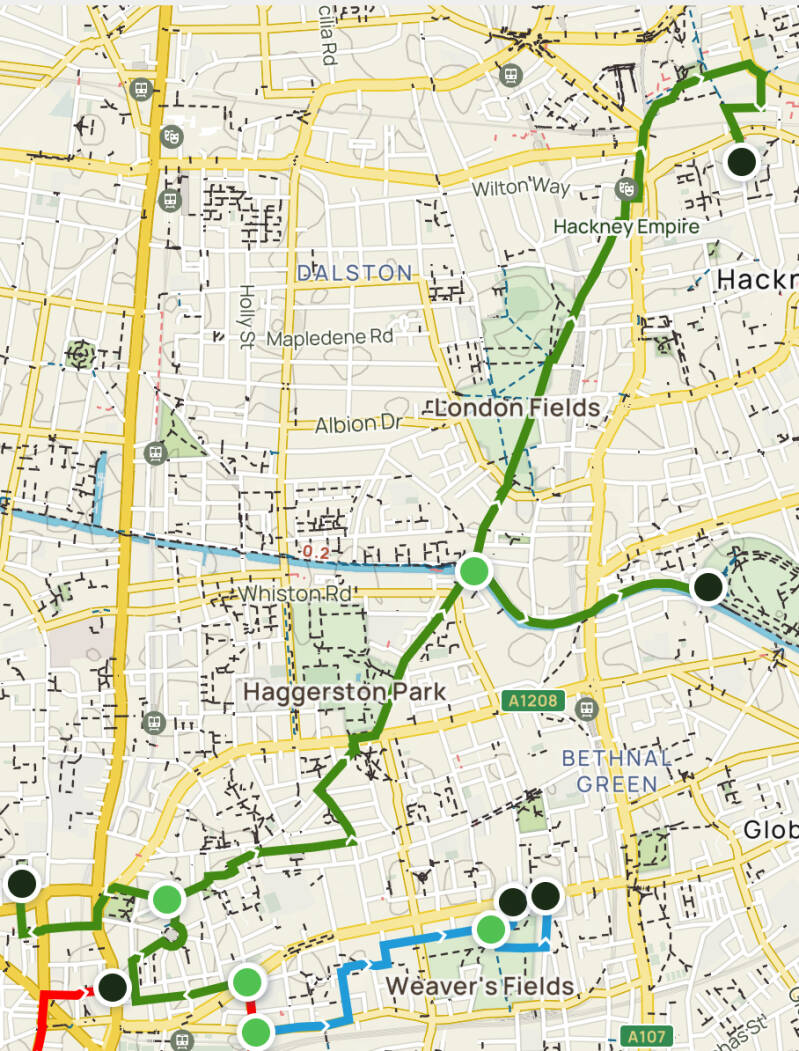
The BLACK PATH to HACKNEY
On the map, site of the HACKNEY CITY FARM. Look at the narrow path, in diagonal: the BLACK PATH
I have another idea for you when you finish the with COLUMBIA RD MARKET:
You will leave the street on the opposite (East) side and cross the HACKNEY ROAD. In front of you the piece of greenery is the HAGGERSTON PARK. Before you start walking GOLDSMITH ROW (and you will be walking along THE BLACK PATH, an ancient track!) you will find the entrance to the HACKNEY CITY FARM and you will also find a charming café-restaurant that is not bad at all: FRIZZANTE. To the right the K2 phone booth, against the backdrop of the former hospital, now a residential building.
You will GOLDSMITH ROW to the end: and you will arrive at BROADWAY MARKET, where a street food market is waiting for you Enjoy it. Ah…it is mostly a SATURDAY market, but if you come here any other day, and especially in the evening, you will also like it for its atmosphere. There is no market but there are many restaurants, cafés and pubs.
Note that the market happens on a street called BROADWAY MARKET. Confused again?. You will find another market in ISLINGTON’s CHAPEL MARKET.
One more Idea: when you are done with BROADWAY MARKET, take to the towpath of the REGENT'S CANAL>>>> and follow it to VICTORIA PARK>>>>, Eastwards.
As always, you have buses:
Next to BROADWAY MARKET, 394 takes you to ISLINGTON, a place that I encourage you to visit during your stay.
On HACKNEY ROAD, 26 and 55 to the WEST END.
On MARE STRET, the D6 to MILE END, LIMEHOUSE, POPLAR and CANARY WHARF>>>>.
On SHOREDITCH HIGH STREET, 149 to the CITY and LONDON BRIDGE. And towards the North to DALSTON (Turkish community, restaurants and cafes).
The centre of HACKNEY is 20 minutes away if you follow the path through LONDON FIELDS, passing a pub with a great beer-garden. I will deal with this area in a future
web.
In HACKNEY you will find the OVERGROUND (many interesting destinations) station and buses to the WEST END, passing through ISLINGTON (38) or towards CANARY WHARF>>>>, passing through VICTORIA PARK>>>>(277).
Or you can carry on the BLACK PATH to WALTHAMSTOW…
Buses from HACKNEY CENTRAL, BROADWAY MARKET is to the SOUTH.
In HACKNEY you could be visiting the parish church and SUTTON HOUSE.

More info about SPITALFIELDS

Was SALVADOR DALI ever in London?. Yes, he had long conversations with the father of psychoanalysis, SIGMUND FREUD, in his house-surgery in HAMPSTEAD.
And that was it. Enjoy SPITALFIELDS and the adjoining areas

WHITECHAPEL

On the map you see the posicionar OF the former WHITECHAPEL BELL FOUNDRY, indicated after the ALTAB ALI PARK
QUIZZ
Observe and think well: what do they have in common these two buildings?. OK, I will give you a clue: the photo to the left is PHILADELPHIA


OK, I will give you another clue: a big clanger hangs or used to hang in those towers…
What about this bell?. Well this one is, as well, related to your route…
Alongside the HIGH STREET and detour towards the ROYAL LONDON HOSPITAL
Today is not SUNDAY but you are coming to the area. That’s fine: there is only a street market, though, on WENTWORTH STREET and adjacent streets.
But, as you find yourself on WHITECHAPEL HIGH ST at the doors of the prestigious ART GALLERY, next to the ALDGATE EAST LU station, why not jumping to buses 25 or 205, and after a couple of stops, Eastwards, you will find yourself in the middle of an authentic London STREET MARKET which is a basically a Bengali one, held on the wide sidewalks of the WHITECHAPEL ROAD.
However, if you go on foot you will see many more things, along the WHITECHAPEL HIGH ST., and ROAD, before reaching the market.
Opposite, the GALLERY, you will pass the ALTAB ALI PARK, where the "white chapel", the church of ST. MARY MATFELON, had been for centuries (until WW2, and, in fact, two successive churches), and now there are small remains of the medieval construction, but, above all, the park is loaded with Bangladeshi references.
Notice, if you enter through the ARCH, that it is the MEMORIAL dedicated to ALTAB ALI, a young man who was murdered by fascist racists in 1978. Let’s preserve the current harmonious conviviality, as it has not been always like this.
You will also find the MEMORIAL to THE ACTIVISTS KILLED IN THE DEFENSE OF THE LANGUAGE, a small reproduction of the one in DHAKA, BANGLADESH’s capital.
Along the road, after the park, you pass the former WHITECHAPEL (now LONDON) BELL FOUNDRY, unfortunately no longer operative (still a few years ago it was the oldest company in England still working).
The EAST LONDON MOSQUE will follows. And, if you branch right and enter FIELDGATE ST. you will see the snalll site of the former SYNAGOGUE, now taken over by the MOSQUE. For a few years, however, both temples and faiths have lived in friendly terms.
Following FIELDGATE STREET, a.fter the mosque’s premises, TOWER HOUSE, now apartments, is no other than a restored and converted ROWTON HOUSE. A DOSS HOUSE, a “hotel for the working men”, as they used to call it. Remember the introduction?. Jack LONDON and Eric BLAIR slept here. And LENIN, TROTSKY, BAKUNIN, STALIN…
TAYYABS, the famous Punjabi restaurant, is a few yards away. Remember that you are visit an area populated by people from Bangladesh.
And you are starting to see the tenement blocks of a huge Victorian development: the FIELDGATE MANSIONS.
Look for NEW STREET (interesting buildings, shops, eateries), then NEWARK ST. You will not miss the BLIZZARD BUILDING, housing the INSTITUTE of the same name, dedicated to the research and teaching of medical and biomedical sciences, and the CENTRE OF THE CELL, the first education centre situated within a laboratory.
You are going to see a few derelict buildings and areas pending restoration and redevelopment, within the ROYAL LONDON HOSPITAL ESTATE.
The former church of ST.AGUSTINE WITH ST.PHILIP houses now the library of the SCHOOL OF MEDICINE (BARTS AND THE ROYAL LONDON), and the MUSEUM of the ROYAL LONDON. JOSEPH MERRICK, JACK THE RIPPER, DR.BARNARDO… MICHAEL JACKSON… the FALSE TEETH of GEORGE WASHINGTON…
The modern huge blue and grey building in front of you is the main one of the Hospital, and from time to time you will see, landing or taking off, the red LONDON AIR AMBULANCE, as this is a major trauma centre.
If you walk back to FIELDGATE ST., note on the courtyard of the second block of the building, the STATUE OF QUEEN ALEXANDRA, consort of EDWARD VII, and patron of the hospital. She was a DANE, and as a su sh, maybe she had some influence that made possible for the Royal London to have a FINSEN LIGHT, as soon a the invention (by a Dane -well, in fact, Icelandic/Faroese- Nobel Prize, DR. FINSEN) was made available.
A famous nurse,EDITH CAVELL, did her training and worked here. A MEMORIAL in ST.MARTIN’S LANE, opposite the NATIONAL and the NATIONAL PORTRAIT GALLERIES (WEST END) pays homage to her, as she was executed during the FIRST WORL WAR, in BELGIUM (where a hospital and other institutions bear her name).
If you still have time and e energy, walk a little bit further Eastwards, and you are going to find two Georgian squares, FORD and SIDNEY. If you reach 91 ASHFIELD STREET you are going to find the house where JACK COHEN lived. Yes, one of the founders of TESCO.
Finally, to content all SHAKESPEARE’s fans, during the pre-building stages of a new development on STEPNEY WAY, they found remains of another Elizabethan playhouse, maybe the first one: the RED LION.
Now, is back to the WHITECHAPEL ROAD, as you want to enjoy the market!. JUBILEE or SIDNEY STREETS take you in that direction. In fact, JUBILEE ST. takes you straight to the RINKOFF BAKERY
The WHITECHAPEL ROAD MARKET
On the map, I pointed where the SONARGAON RESTAURANT and the West end of the market are

Daily street market stalls and shops along the WHITECHAPEL ROAD: Asian fruits and vegetables, spices, meat and frozen fish and many other Bangladeshi food products, Saris and other traditional clothing, perfumes...
And many places to eat in or take away, patronised by the local community, which ensures authenticity.
At the West end of the market stretch you will find the SONARGAON restaurant. Take a look…do not even think to get some food, the queues are endless. It occupies the site of a Victorian mock-Tudor pub.
The LONDON AIR AMBULANCE is a service provided by a charity
If you were walking along the WHITECHAPEL RD., after the EAST LONDON MOSQUE, the SALVATION ARMY HOSTEL, left, the former ROYAL OAK PH, right, the former SCHOOL, left and… finally, the market!. Note the MOCK TUDOR former BLACK BULL PH, now the SONARGAON restaurant.
Once in the middle of the market, the 18th c. buildings you see on the other side of the road are the original buildings of the ROYAL LONDON HOSPITAL, one of the most historical and still avery important one, but now have a new use: as TOWN HALL , headquarters of the BOROUGH COUNCIL of TOWER HAMLETS. Obviously, it can be visited and some elements of the old hospital are preserved.
Back to the market pavement, yes enjoy the market but save a thought for those <<<<RUSSIAN delegates mentioned before (they slept in the ROWTON HOUSE) who were signing off, in secrecy, in the JEWISH SOCIALIST CLUB, in FULBOURNE ST. to participate in the Fith Congress of the SOCIAL DEMOCRATIC AND LABOUR PARTY of RUSSIA, held in North London. That was in 1907.
A yes, now you can have a couple of SAMOSAS!.
In the middle of the market, perhaps you will miss the MEMORIAL TO KING EDWARD VII, erected by the Eastender Jews. By the way, his Coronation was postponed due to an appendicitis, and he was treated in the building standing across the road.
In no. 269 there former GRAVE MAURICE pub - the name can still be seen on the façade - where RONNIE KRAY, who was a regular, was interviewed for TV by MICHAEL BARRETT, under the spying eyes of policeman NIPPER READ, under the appearance of an East End workman.
You will appreciate, if you look up, the old WORKING LADS INSTITUTE, a Victorian institution, which gave instruction and provided activities to the working class boys , as well as the old entrance to the WHITECHAPEL L.U station. With the arrival of the ELIZABETH LINE, in May 2022, the station has acquired 3 other entrances.
At number 259, in 1884, there was a place where PENNY GAFFS, small comedy and variety shows were performed, in Victorian times. Sometimes with awkward characters at the entrance, to attract the attention of the public (like the man who had no hands and shaved with his feet). The wrongly called "elephant man", JOSEPH MERRICK, who suffered from neurofibromatosis (which disfigured his face and other parts of the body) was the protagonist of one, and it was here that DR. FREDERICK TREVES discovered and rescued him, in order to help him and to deepen his research into diseases of the skin. The ROYAL LONDON HOSPITAL museum preserves MERRICK's skeleton and some possessions. MICHAEL JACKSON offered money to the hospital to buy the skeleton!
Along BRADY STREET you are going to find an ASHKENAZI CEMETERY. The graves can be seen through the gates. It was closed to burials in 1858. The great NATHAN ROTHSCHILD was buried in 1836. However, to protect the Jewish heritage of the area, preventing redevelopment, a member of the ROTHSCHILD family was interred in 1990.
Towards the East end of the market, the yellow brick building is what remains of the former MAN, CROSSMAN AND PAULIN brewery - which was known as the ALBION - now converted into apartments and a health centre. It is the second major brewery to be mentioned in this guide!.
You continue: the IDEA STORE is a public library, in fact, more than a traditional library: there are also courses and activities for children and adults, and there is a cafe at the top, with good views. The building is a design from the workshop of architect DAVID ADJAYE, a BRITISH-GHANEAN.
THE BLIND BEGGAR pub was the scene of the murder of GEORGE CORNWELL, a member of the South London gang, and arch-enemy of the KRAYS, the Eastender gang. RONNIE KRAY, shot in his head with a Mauser. 1966.
At the beginning of the 20th c. a posse of pickpockets operated in the area: the BLIND BEGGAR GANG.
It is not strange that the GANGSTER TOUR groups stop here!. London, land of gangsters…
And, by the way, will come across the legend of the BLIND BEGGAR OF BETHNAL GREEN a few times in the London’s East End, especially in BETHNAL GREEN.
Opposite, on the other side of the main road, an office building with no interest.It used to be a huge MAIL DISTRIBUTION CENTRE, and one of the ends of a railway line: the little MAIL RAIL or LONDON POST OFFICE RAILWAY. The other side of the line is PADDINGTON SORTING OFFICE, passing the huge sorting office in MOUNT PLEASANT, where you can visit the POSTAL MUSEUM sited there, in CLERKENWELL, and you will experience what is like travelling like a letter or parcel!. The railway was discontinued on 2003.
Cross CAMBRIDGE HEATH ROAD and you will find yourself at MILE END WASTE>>>>. Maybe a market stall, or two, you will find this side of the road.
At the WHITECHAPEL LU station (District, Metropolitan & City Lines) you can also take the OVERGROUND and the ELIZABETH LINE.
Buses 25 and 205 stop along the road. And they take you further East. Route 25 towards THREE MILLS ISLAND and the OLYMPIC PARK >>>> and to STRATFORD >>>>. 205 ends at BOW CHUCH>>>>.
Churchill in WHITECHAPEL

The SIEGE OF CABLE STREET. WINSTON CHURCHILL, HOME OFFICE SECRETARY in 1911, in search of action..
THE BANGLADESHI COMMUNITY IN THE EAST END



JUBILEE ST. Bust of the FOUNDER OF THE BENGALI NATION, SHEIKH MUJIBUR RAHMAN
The poet TAGORE came to London as a student, in 1878: until 1880. Then, again, in 1912 and 1932.

Do you know that almost 40% of the population of TOWER HAMLETS has BANGLADESHI origins?.
Would you like to know, as well, that all the members of the COUNCIL a belong to this community?.
The first Bengalis coming to London were seamen, employed in the British Merchant Navy. They were called LASCARS. Originally from the port of CHITTAGONG or from the UPLAND district of SILHET.. They stayed in lodging houses, exclusive for them in the dock areas. In CANNING TOWN SYED TOFUSSIL ALLY opened a sailors’home.
They must have h acquired culinary skills and experience … AYUB ALI, opened his café at 76 COMMERCIAL ST. He was as well involved in the creation of the INDIAN SEAMEN WELFARE LEAGUE.
In the 1930s there were 1000 Indian doctors in Britain.
The first anxieties about immigration were appearing, but after WW2, Britain was in need of Labour and migration from the COMMONWEALTH was encouraged. First were men, only. Later on whole families established in East London.
Bangladeshi Londoners became involved in the struggle for independence (1971}, and other types of political activism.
In 1991 there were 158.000 arrivals. In 2011, 447.000.
On the map DURWARD ST. One of the places linked to the RIPPER


More information about WHITECHAPEL
GUNMAKERS. COMMERCIAL ROAD
Former ST.GEORGE’s BREWERY. COMMERCIAL ROAD
COMMERCIAL RD. SYNAGOGUE
SYNAGOGUE
HENRIQUES ST.
And that was WHITECHAPEL

MILE END WASTE
On the map I have pointed out where the TRINITY ALMSHOUSES are.

Buses 25 and 205


TRINITY ALMSHOUSES

The BOOTHS
If you continue walking, after the WHITE HART pub, belonging to a BEDFORDSHIRE BREWERY who owns only a few pubs in London, the yellow brick Edwardian building was the residence of the <<<<ALBION BREWERY engineer.
Then you will find the TRINITY ALMSHOUSES, a charity housing establishment set up in the 17th century, to provide shelter for ship captains (or their widows), when they had fallen in financial dire straits. It was normal, in 16th century England, when the religious institutions that had traditionally provided welfare functions no longer existed, for wealthy people to step in and establish almshouses and place them under the sponsorship of GUILDS or other similar CORPORATIONS, such as TRINITY HOUSE. You will see many almshouses when you visit London.
Look at the MURAL with cartoon like images of the most representative figures of the EAST END (most of them mentioned in this guide), including ANTHONY EDWARDS, the lawyer occupying the offices in the building that houses the mural.
The TOWER HAMLETS MISSION is a charity which was established by FREDERICK CHARRINGTON >>>>.On our days, it helps people with dependencies.
This area was sort of the SPEAKERS' CORNERS of the Victorian EAST END. A place of preachers, let say.
In the contemporary GREEN, a small garden that separates you from the main road, you will find some MEMORIALS: two to (“General”) WILLIAM BOOTH (it was HERE where he preached and founded the precedent of the SALVATION ARMY) and one to his wife CATHERINE.
The BOOTH are buried in ABNEY PARK CEMETERY, in STOKE NEWINGTON (LB OF HACKNEY) one of the MAGNIFICENT SEVEN, which I encourage you to visit. You will not believe your luck ; on CAMBRIDGE HEATH ROAD stops the bus 106 which takes you to STOKE NEWINGTON, which is an awesome place to visit.
Somewhere around here must have been, centuries ago, a milestone. Probably it marked a distance of 1 mile from ALDGATE.
The GREEN, all those centuries ago, must have been, much bigger (on the other hand, in pre-war maps of the area you can see houses built on the little green, so the area has changed a lot, and in different directions) and, perhaps around here, was an uncultivated part of the MANOR, that is, a WASTE.
This area was under the jurisdiction of the VESTRY (the old form of a local government) of MILE END OLD TOWN. That was the official name of the district
Going back to the SALVATION ARMY subject:t has training center in DENMARK HILL you will find a museum and the same pair of statues of the BOOTHS you see here. On the other hand, couple of hundred yards from ST.PAUL’S CATHEDRAL you will find the international HQ of this church, organised along a military model.
And again a bust of KING EDWARD VII (the gentleman of Europe), erected by the FREEMASONS of East London.

Photo from SPITALFIELDS LIFE
Former SPIEGELHALTER’s little jewellery shop, now the entrance of the refurbished building



On the other side of the main road, if you enter the COUNCIL ESTATE, on O'LEARY SQUARE, you will find RINKOFF, the only Jewish bakery left in the area.
Further ahead is an old department store. Look closely. It used to be called the “HARRODS OF EAST LONDON”. Have you realised the awkwardness of this monumental “building” before looking at the link?. Now, the little old SPIEGELHALTER shop has been converted in the entrance of a new building of QUEEN MARY’S-UNIVERSITY OF LONDON, DEPT W.
By the way HARRODS, the real one, was established, in his early origins, when the older MR. HARROD was still a tiny grocer, in the EAST END (4 CABLE STREET)>>>>.
You continue forward, if you have the strength. You will pass some Georgian houses on the South occupied by shops and restaurants. I recommend DHAKA BIRYANI and BIRYANI HOUSE, if you fancy a Bengali CURRY. But, as there is in the area a small SOMALI community you will find, as well, a couple of eateries of that nationality.
At the beginning of that row of houses, there is a plaque commemorating the residence here, with his family, of CAPTAIN JAMES COOK. By the way, Matthew Flinders was one of his lieutenants. He was demoted to simple able seaman by Captain COOK during his expedition of 1793… A descendant of the sadly demoted sailor created the PETRIE MUSEUM (BLOMSBURY), one of the best collections of Egyptian archaeology in the world.
This, North side, presents you with the AL-HUDA MOSQUE, that used to be a NON-CONFORMIST temple. Beside, the GENESIS CINEMA, is a reminder of the many of the entertainment establishments that used to line the road… In the 60s a very important film premiere (SPARROWS CAN’T SING) took place here; BARBARA WINDSOR, the star, and LORD SNOWDEN, the society photographer were present, but it seems that SNOWDEN’s wife, PRINCESS MARGARET, the Queen’s sister, excused his attendance due to an indisposition. The KRAYS were there, too.
BARBARA WINDSOR, the star of BBC soap EASTENDERS (shot to this day in the ELSTREE studios), during the 80s and 90s, was born in SHOREDITCH, and lived as a child in STOKE NEWINGTON.


Still a little further East: towards MILE END PARK and the REGENT
HALF MOON, a WETHERSPOON PUB, that used to be a theatre and, before that, a METHODIST CHAOEL

Towards the REGENT’S CANAL and MILE END PARK
MILE END ROAD. MALPLAQUET HOUSE
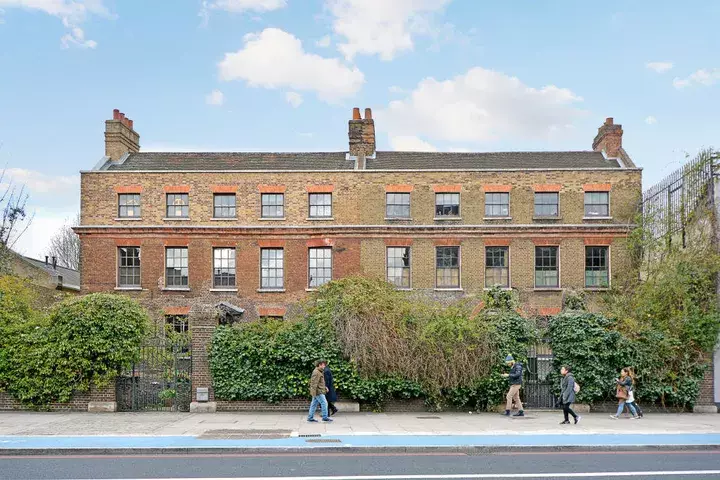
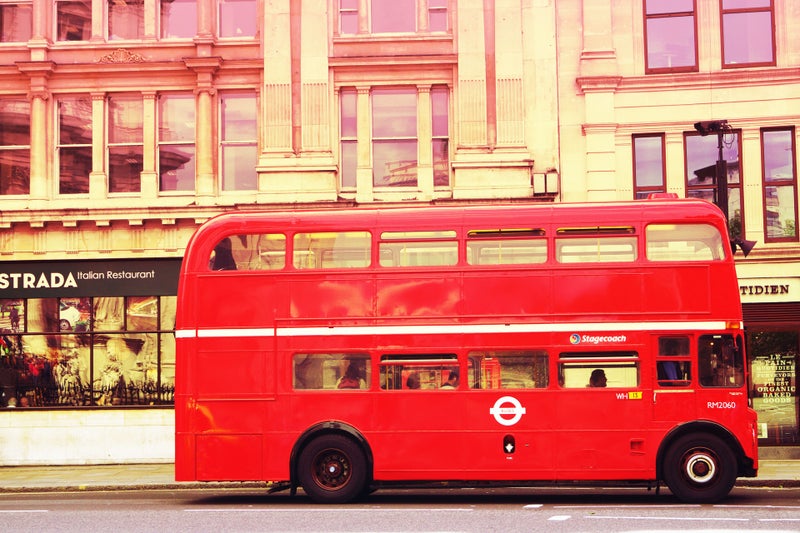
As you already know, the buses 25 and 205 will help you move forward... further towards the East. Or maybe back, to Central London.
You have the STEPNEY GREEN LU station (CENTRAL LINE) a little further on.


If you have come this far, and you continue with similar strength, why not continue walking?
Before reaching the station, you will pass a short terrace of Georgian houses and a small shopping centre where you will find an ASDA supermarket and the CURRYS electronics store. Maybe you have some shopping needs. Before, on the corner with CEPHAS ROAD (curious name, is it not?: it is the name given by Jesus Christ to Saint Peter. It means ROCK, in Classic Greek) a block of Victorian offices. All together, reminds us of the third brewery so far in this guide, CHARRINGTON’S, also known as BLUE ANCHOR BREWERY, that occupied a large plot of land, developed as housing and the shopping mall in the 80s.
And members of the family lived in MALPLAQUET HOUSE.
One of them was, FREDERICK CHARRINGTON, heir of the family fortune (they were owners of the second largest brewery in the world !). He suffered a conversion — when, in front of one of his pubs, he saw a wife, accompanied by a child, being hit by her husband, the man intending to spend his wage in beers, against the advise of his woman…— and he decided to give up his brewing business.
If you continue along the road, MILE END ROAD, after the LU station, towards the East, you are closing by to MILE END PARK>>>>. You might link with the CANAL WALK following the itinerary outlined there, but in the opposite direction from that PARK>>>>. passing the HALF MOON PUB, the former JEWISH HOME (BARON STERN HOUSE), MILE END PLACE, and the Jewish NOVO CEMETERY, inside the QUEEN MARYKS University campus, amongst other sights.
But you might wish to turn right, following STEPNEY GREEN (street)>>>>….
More info about MILE EN WASTE
More about the area in SURVEY OF LONDON
And that was MILE END WASTE

STEPNEY
STEPNEY GREEN: DUNSTAN HOUSES, on the map. To the south , the LIMEHOUSE BASSIN. You will be there soon!

Towards STEPNEY and the LIMEHOUSE BASIN, by the THAMES
If you continue walking towards the Southeast, along STEPNEY GREEN - this is the name of the street - you will admire the Georgian and Victorian houses.
Note the former BAKERY’s ghost sign advertising DAREN BREAD.
Next, DUNSTAN HOUSES, the red brick Victorian buildings, were built by a philanthropic institution, the EAST END DWELLINGS COMPANY, created amongst others, by RECTOR BARNETT and HENRIETTA, his wife. In one of the flats, had the base a revolutionary anarchist commune formed and led led by a German, not Jewish, but who led the Jewish community and could speak YIDDISH, RUDOLF ROCKER, who lived here with his MILLIE, his partner and family.
You will find, along the left row, the old DISPENSARY (a plaque indicates its former use), the former Jewish OLD PEOPLE HOME (nos. 35-37, now apartments) , a former SYNAGOGUE (now, the ROSALIND GREEN boxing hall), a former Jewish SCHOOL, social housing by the 4% DWELLINGS COMPANY (ROTHSCHILDS) and, towards the end, a more monumental former SYNAGOGUE, converted into apartments.
You reach the end, and pass the FOUNTAIN commemorating the Jewish philanthropist and writer LEONARD MONTEFIORE. The MONTEFIORE family was among the most distinguished in the London’s Sephardic Jewish community. They were bankers, with connections to the Rothschilds, Goldsmids, Salomons, Montagus, Mocattas, Sterns and more – names that crop up time and time again in the story of the Jewish East End of London and known collectively as ‘The Cousinhood’.
The family, originally called CARVAJAL, had fled IBERIA the persecution of the INQUISITION, they headed for MEXICO, where a Carvajal managed to hold the position of governor. But they had to flee again, escaping to ITALY, finally ending up in MONTEFIORE DE L'ASSO (LE MARCHE), from where they took the name. You will hear a lot about the MONTEFIORES in London.
And you can visit STEPNEY PARK. Again, a newly created park. The CLARE HALL ESTATE occupied this site; row after row of houses, all ruined by the BLITZ and definitively demolished in the post-war years. You will still see some ruins, left standing, of what used to be a religious institution.
STEPNEY. Where is the village?
SARAH MULLALLY, current BISHOP OF LONDON




DUNSTAN (c. 909 - 988), originally a smithy, was made Bishop of Worcester, then of London and, finally, Archbishop of Canterbury in 961. He is reputed to have pinched the devil's nose with iron tongs, hence the carving on the right hand side over the doorway of the church. The ship on the left is there because this was the sailor's church, and the red ensign, the flag of the merchant navy, can often be seen flying from its flagpole.
Passing the ventilation tower of the ELIZABETH LINE (in fact, at this point two branches of the network divide, forming a large underground CAVERN), you can already see the bell tower of the Church of ST. DUNSTAN & ALL SAINTS, the oldest parish in the East End. In early medieval times, all the territory you are exploring (that is from ALDGATE to the LEA RIVER) belonged to the parish of STEPNEY. Here was the main focus of population, when a PARISH VESTRY (the link does not refer to Stepney) was then the common local government institution in England.
The church you see now is mostly 15th c., but, inside, decorating the chancel, a SAXON ROOD PANEL dates from the 11th. The oldest villages and churches in England were founded in ANGLO-SAXON TIMES.
in the wall of the South aisle a STONE, brought from CARTHAGE, according to a 1663 inscription.
You find yourself in the old fishing village of STEPNEY. Sailors and fishermen, here?.
Indeed, all births and deaths, marriages, etc. that occurred on the high seas were recorded in its registry. One more clue to STEPNEY's sailor character: the MERCHANT NAVY flag flies from the bell tower.You are, definitely, in the old port of London areas. You will see water very soon!.
And to LIMEHOUSE
Where the ST.DUNSTAN CHURCH is

LIMEHOUSE BASIN. You can link with other routes.
Towards CANARY WHARF, towards the TOWER, or alongside the REGENT’S CANAL (VICTORIA PARK) or the LIMEHOUSE CUT (THREE MILLS ISLAND)

Opposite (West) the church you will find the CITY FARM. This is an I deal attraction when you are here with kids, and you are going to find a little food market on Sundays.
And to the south side, the former MERCERS or LADY MICO ALMSHOUSES, a block of typical charity houses, where you will see the figure (a small bust of... a virgin?, a queen? It is not very clear); it is called a "maiden", the badge of the extremely wealthy MERCERS OF LONDON, one of those medieval GUILDS or TRADE CORPORATIONS that still survive, in the form of the LIVERY COMPANIES, who, in part, are in charge of the running of the CITY OF LONDON. The MERCERS were buyers and sellers, pure traders or merchants in expensive exotic cloths, they did not manufacture anything at all… By the way, try to visit the area of the City where the MERCERS keep their hall, FREDERICK PLACE, off OLD JEWRY.
You will find MERCERS’ MAIDENS in all the parts in London where the said GUILD has or had properties, as here, in STEPNEY (not only these buildings), or in COVENT GARDEN, or, of course, in the CITY.
If you want to call it a day , from here, opposite the Church, you will find the bus stop. Route 339 takes you to SHADWELL>>>> (DLR and OVERGROUND stations, separate); where you will find the WATNEY MARKET, street market, as well, a very Bengali). The 339 takes you to MILE END STATION, OLYMPIC PARK, and LEYTONSTONE, in the opposite direction.>>>>
Bus 309 takes you to BETHNAL GREEN (West) or to POPLAR and CANNING TOWN.

If you want to call it a day , from here, opposite the Church, you will find the bus stop. Route 339 takes you to SHADWELL>>>> (DLR and OVERGROUND stations, separate); where you will find the WATNEY MARKET, street market, as well, a very Bengali). The 339 takes you to MILE END STATION, OLYMPIC PARK, and LEYTONSTONE, in the opposite direction.>>>>
Bus 309 takes you to BETHNAL GREEN (West) or to POPLAR and CANNING TOWN.
But I bet you want to continue discovering more hidden corners of London, continue walking to YORK SQUARE, preferably along WHITE HORSE ROAD where you will pass the old school and the old local headquarters of the LIMEHOUSE DISTRICT BOARD OF WORKS, the institution that superseded the VESTRY, and precedent of a modern municipal authority, which is now the headquarters of a theatre dedicated to children and young people, the HALF MOON THEATRE (that used to be based on that pub called…<<<<THE HALF MOON>>>>), and then turn left entering WAKELING ST.
Why don't you have a beer at the OLD SHIP or at the QUEEN'S HEAD, the two pubs on opposite sides of this typical London garden square, made up of houses built for working-class families, like the entire neighborhood. Both pubs are genuine 21rst c. EAST END pubs.
Don't miss the SE side of YORK SQ: a passage takes you to an unexpected place, FLAMBOROUGH WALK, where you find the oldest houses in the neighbourhood, from the 18th century, when this was still a pre-industrial village.
You are very close to SALMON LANE, and ST.ANNE’S Church , in LIMEHOUSE>>>>.

Pupil wearing a DUNCE HAT
YURT CAFÉ
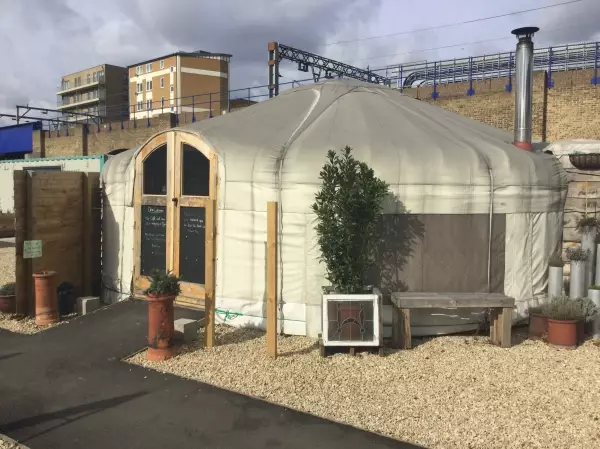
And then, after crossing the COMMERCIAL ROAD, you can enter the LIMEHOUSE BASIN, a dock. The old port, the former DOCKS now the LONDON DOCKLANDS>>>>. Or you can have a coffee in a MONGOLIAN TENT, the YURT CAFÉ, part of the ROYAL FOUNDATION OF ST. KATHARINE. Or you could head with your kids towards the RAGGED SCHOOL MUSEUM, by the REGENT’S CANAL>>>> and see how a VICTORIAN CLASSROOM looked like, complete with serried ranks of desks slate writing boards, and dunce’s hats.
COMMERCIAL ROAD looks like continuation of Victorian COMMERCIAL STREET, but, in fact, it is older as and it was built at the beginning of the 19th century, in order to join the ISLE OF DOGS>>>> where the WEST INDIA DOCKS were being built (the section of road that connects to these is the WEST INDIA DOCKS ROAD) and BLACKWALL>>>>,in this case along the EAST INDIA DOCKY ROAD, where the EAST INDIA COMPANY had its port base, with the CITY. Carts loaded with valuable cargos traveled the long this road 200 years ago, heading to the warehouses of the EAST INDIA COMPANY, in CUTLER STREET, very close to <<<<MIDDLESEX STREET, or PETTICOAT LANE, as you like.
The traffic does make this street a very uncomfortable place to be and to walk down, even if there are some interesting sights.
On COMMERCIAL ROAD you have buses 15, 115 and 135, towards the CITY and D3 that takes you to WHITECHAPEL and BETHNAL GREEN and also the LIMEHOUSE DLR and railway station.
You can more than welcome if you decide to stay and try get to know more of the the area. You are now in LIMEHOUSE>>>>. You will reach the bank of the THAMES in 10 min.
But… do you remember when you were at the end of <<<<BRICK LANE and I recommended walking along CHESHIRE ST. to BETHNAL GREEN?. Next chapter is BETHNAL GREEN.





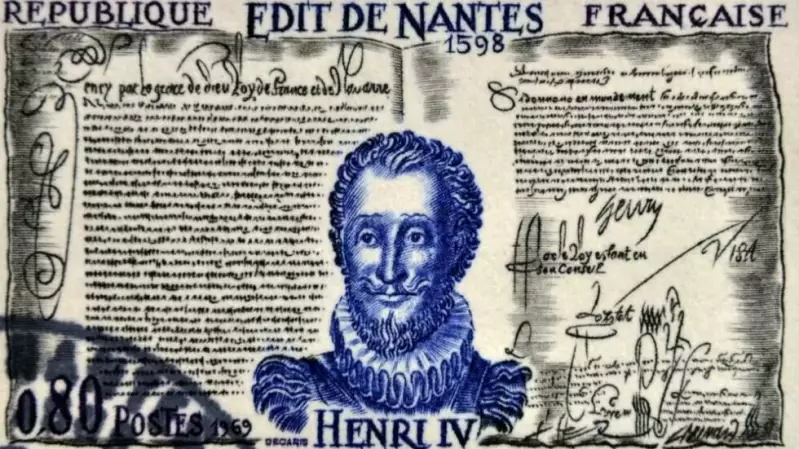



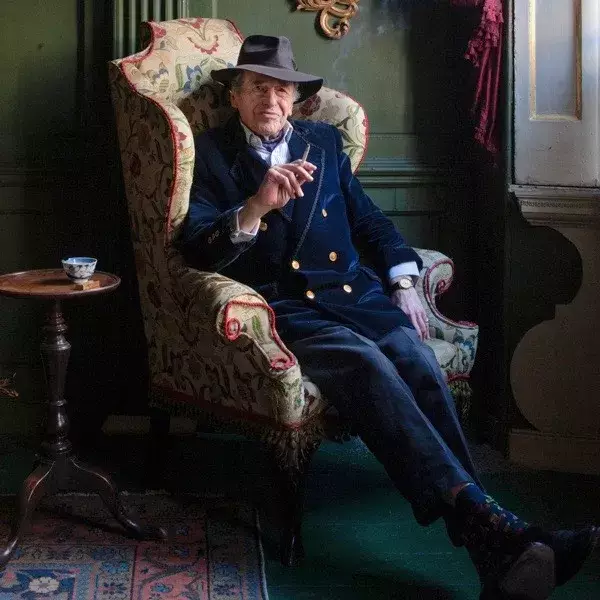



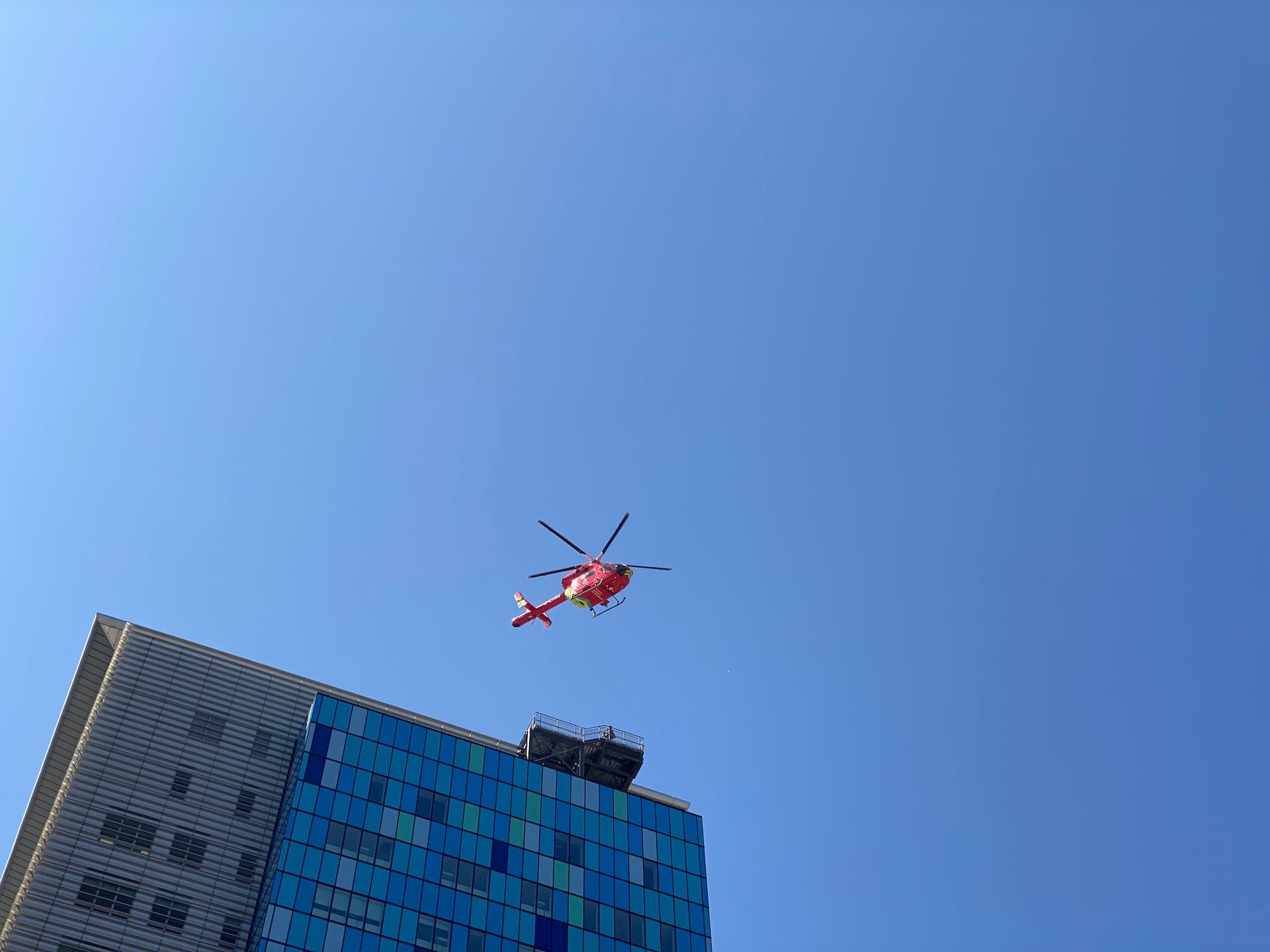



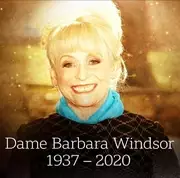




Create Your Own Website With Webador